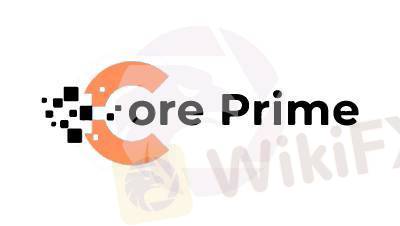
2025-06-27 22:17
IndustryGeneral Clarity of Fee andCommission Structures
The clarity of fee and commission structures is paramount for building trust and ensuring positive client relationships, regardless of the industry (finance, services, real estate, etc.). Ambiguity in pricing can lead to client frustration, disputes, and ultimately, churn.
Here's an overview of what constitutes good clarity and best practices:
I. Principles of Clear Fee & Commission Structures:
* Transparency: All potential charges should be disclosed upfront, explicitly and comprehensively, before a client commits. There should be no hidden fees or surprises.
* Simplicity: The structure should be easy to understand, avoiding overly complex calculations or jargon.
* Justification: Clients should understand why they are being charged and the value they receive for those fees.
* Consistency: Fees should be applied consistently across similar services or products.
* Accessibility: Fee schedules should be easily available and digestible (e.g., on a website, in contracts, or dedicated brochures).
II. Key Elements for Clear Disclosure:
* Itemized Breakdown: Instead of a lump sum, break down fees into individual components. For example:
* Financial Services: Management fees (as % of AUM), trading commissions (per trade or fixed), advisory fees (hourly/project-based), custodian fees, fund expense ratios, performance fees.
* Real Estate: Commission percentage (for buyer/seller agent), administrative fees, listing fees, marketing costs.
* Consulting/Services: Hourly rates, project-based flat fees, retainer fees, material costs, travel expenses.
* Clear Units of Measurement: Specify what the fee is based on (e.g., "% of assets under management," "per transaction," "per hour," "flat fee per project").
* Examples/Scenarios: Provide hypothetical examples of how fees would be calculated under different scenarios. This helps clients visualize the impact.
* Payment Schedule: Clearly state when fees are due (e.g., upfront, monthly, quarterly, upon completion of a milestone).
* Minimums/Maximums/Thresholds: If there are minimum fees, maximum caps, or tiered structures (e.g., commission percentage changes after a certain sales volume), these must be explicitly stated.
* Terms and Conditions: Any specific conditions under which fees may change, be waived, or applied differently should be clearly outlined.
* Comparability: If possible, provide context or comparisons to industry averages, helping clients gauge fairness.
III. Best Practices for Communicating Fee & Commission Structures:
* Proactive Disclosure: Don't wait for the client to ask. Bring up fees early in the conversation.
* Written Documentation: Always provide fee information in writing (e.g., a dedicated fee schedule document, part of the service agreement).
* Verbal Explanation: Walk clients through the written document, explaining each point and answering questions.
* Visual Aids: Use tables, charts, or infographics to simplify complex structures.
* FAQs: Create a dedicated section for frequently asked questions about fees.
* Regular Review: Periodically review and update fee structures, informing clients well in advance of any changes.
* Training for Staff: Ensure all client-facing staff are fully knowledgeable about the fee structures and can explain them clearly and confidently.
By adhering to these principles and practices, businesses can foster trust, reduce client misunderstandings, and build stronger, more sustainable relationships.
#2025RealBrokerReviews
Like 0
kolo343
Trader
Hot content
Industry
Event-A comment a day,Keep rewards worthy up to$27
Industry
Nigeria Event Giveaway-Win₦5000 Mobilephone Credit
Industry
Nigeria Event Giveaway-Win ₦2500 MobilePhoneCredit
Industry
South Africa Event-Come&Win 240ZAR Phone Credit
Industry
Nigeria Event-Discuss Forex&Win2500NGN PhoneCredit
Industry
[Nigeria Event]Discuss&win 2500 Naira Phone Credit
Forum category

Platform

Exhibition

Agent

Recruitment

EA

Industry

Market

Index
General Clarity of Fee andCommission Structures
 Sri Lanka | 2025-06-27 22:17
Sri Lanka | 2025-06-27 22:17The clarity of fee and commission structures is paramount for building trust and ensuring positive client relationships, regardless of the industry (finance, services, real estate, etc.). Ambiguity in pricing can lead to client frustration, disputes, and ultimately, churn.
Here's an overview of what constitutes good clarity and best practices:
I. Principles of Clear Fee & Commission Structures:
* Transparency: All potential charges should be disclosed upfront, explicitly and comprehensively, before a client commits. There should be no hidden fees or surprises.
* Simplicity: The structure should be easy to understand, avoiding overly complex calculations or jargon.
* Justification: Clients should understand why they are being charged and the value they receive for those fees.
* Consistency: Fees should be applied consistently across similar services or products.
* Accessibility: Fee schedules should be easily available and digestible (e.g., on a website, in contracts, or dedicated brochures).
II. Key Elements for Clear Disclosure:
* Itemized Breakdown: Instead of a lump sum, break down fees into individual components. For example:
* Financial Services: Management fees (as % of AUM), trading commissions (per trade or fixed), advisory fees (hourly/project-based), custodian fees, fund expense ratios, performance fees.
* Real Estate: Commission percentage (for buyer/seller agent), administrative fees, listing fees, marketing costs.
* Consulting/Services: Hourly rates, project-based flat fees, retainer fees, material costs, travel expenses.
* Clear Units of Measurement: Specify what the fee is based on (e.g., "% of assets under management," "per transaction," "per hour," "flat fee per project").
* Examples/Scenarios: Provide hypothetical examples of how fees would be calculated under different scenarios. This helps clients visualize the impact.
* Payment Schedule: Clearly state when fees are due (e.g., upfront, monthly, quarterly, upon completion of a milestone).
* Minimums/Maximums/Thresholds: If there are minimum fees, maximum caps, or tiered structures (e.g., commission percentage changes after a certain sales volume), these must be explicitly stated.
* Terms and Conditions: Any specific conditions under which fees may change, be waived, or applied differently should be clearly outlined.
* Comparability: If possible, provide context or comparisons to industry averages, helping clients gauge fairness.
III. Best Practices for Communicating Fee & Commission Structures:
* Proactive Disclosure: Don't wait for the client to ask. Bring up fees early in the conversation.
* Written Documentation: Always provide fee information in writing (e.g., a dedicated fee schedule document, part of the service agreement).
* Verbal Explanation: Walk clients through the written document, explaining each point and answering questions.
* Visual Aids: Use tables, charts, or infographics to simplify complex structures.
* FAQs: Create a dedicated section for frequently asked questions about fees.
* Regular Review: Periodically review and update fee structures, informing clients well in advance of any changes.
* Training for Staff: Ensure all client-facing staff are fully knowledgeable about the fee structures and can explain them clearly and confidently.
By adhering to these principles and practices, businesses can foster trust, reduce client misunderstandings, and build stronger, more sustainable relationships.
#2025RealBrokerReviews
Like 0
I want to comment, too
Submit
0Comments

There is no comment yet. Make the first one.

Submit
There is no comment yet. Make the first one.